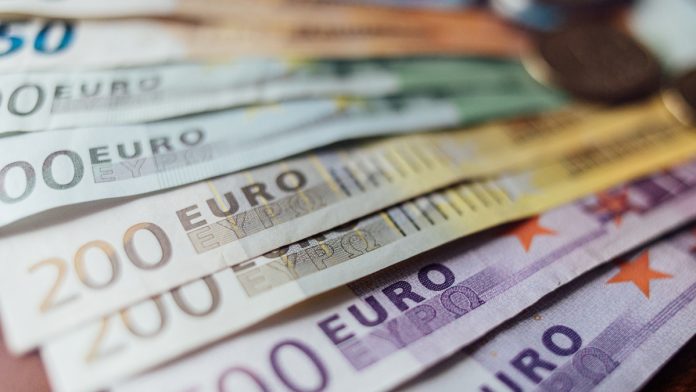After declining for the first three days of last week the pound picked up versus the euro in the last two sessions heading into the weekend. As a result, the pound euro exchange rate ended the previous week at roughly the same level that it ended at €1.1156. The pound was declining versus the euro in early trade on Monday.
| What do these figures mean? |
|---|
| When measuring the value of a pair of currencies, one set equals 1 unit and the other shows the current equivalent. As the market moves, the amount will vary from minute to minute. If the euro amount increases in this pairing, it’s positive for the pound. Or, if you were looking at it the other way around:1 EUR = 0.87271 GBPIn this example, €1 is equivalent to approximately £0.87. This measures the euro’s worth versus the British pound. If the sterling number gets larger, it’s good news for the euro. |
The pound recovered some lost ground in the second half of last week after the UK GDP reading was better than analysts had been expecting. Economic growth in May unexpectedly rebounded, increasing by 0.3% in the 3 months to May, this was much higher than the 0.1% that analysts had forecast. It means that there is a good chance that the UK will avoid slipping into contraction in the second quarter. Market participants had been fearful that the UK economy was heading for contraction in the second quarter and a recession by the end of the third quarter as Brexit uncertainty and a global slowdown take their toll on the UK economy.
With the results of the UK Conservative leadership race not due until 22nd July, UK economic data could be the central focus for pound investors this week.
On Tuesday, investors will be watching UK employment figures. The UK labour market has so far remained strong as firms continue hiring despite lingering Brexit uncertainty. Any signs that firms are starting to ease back on hiring, or a decline in average earnings could send the pound lower.
| How does strong jobs data boost the currency? |
|---|
| It works like this, when there is low unemployment and high job creation, the demand for workers increases. As demand for workers goes up, wages for those workers also go up. Which means the workers are now taking home more money to spend on cars, houses or in the shops. As a result, demand for goods and services also increase, pushing the prices of the goods and services higher. That’s also known as inflation. When inflation moves higher, central banks are more likely to raise interest rates, which then pushes the worth of the currency higher. |
Euro Struggles Post ECB Minutes Release
The euro moved lower towards the end of the previous week after the minutes from the latest European Central Bank (ECB) meeting showed that the central bank was poised to ease monetary policy when the economy needed it. The ECB has joined the Federal Reserve adopting a more dovish stance towards monetary policy.
| Why do interest rate cuts drag on a currency’s value? |
|---|
| Interest rates are key to understanding exchange rate movements. Those who have large sums of money to invest want the highest return on their investments. Lower interest rate environments tend to offer lower yields. So, if the interest rate or at least the interest rate expectation of a country is relatively lower compared to another, then foreign investors look to pull their capital out and invest elsewhere. Large corporations and investors sell out of local currency to invest elsewhere. More local currency is available as the demand of that currency declines, dragging the value lower. |
Investors will be watching eurozone economic data closely, to see whether it continues to indicate a weakening economy. The first high impacting release is on Tuesday. This is the ZEW economic sentiment index. Analysts are forecasting that the index will drop lower to -22 as concerns grow over the health of the blocs’ economy, but particularly Germany’s economy, the largest in the eurozone.
This publication is provided for general information purposes only and is not intended to cover every aspect of the topics with which it deals. It is not intended to amount to advice on which you should rely. You must obtain professional or specialist advice before taking, or refraining from, any action on the basis of the content in this publication. The information in this publication does not constitute legal, tax or other professional advice from TransferWise Inc., Currency Live or its affiliates. Prior results do not guarantee a similar outcome. We make no representations, warranties or guarantees, whether express or implied, that the content in the publication is accurate, complete or up to date. Consult our risk warning page for more details.
This article was initially published on TransferWise.com from the same author. The content at Currency Live is the sole opinion of the authors and in no way reflects the views of TransferWise Inc.





